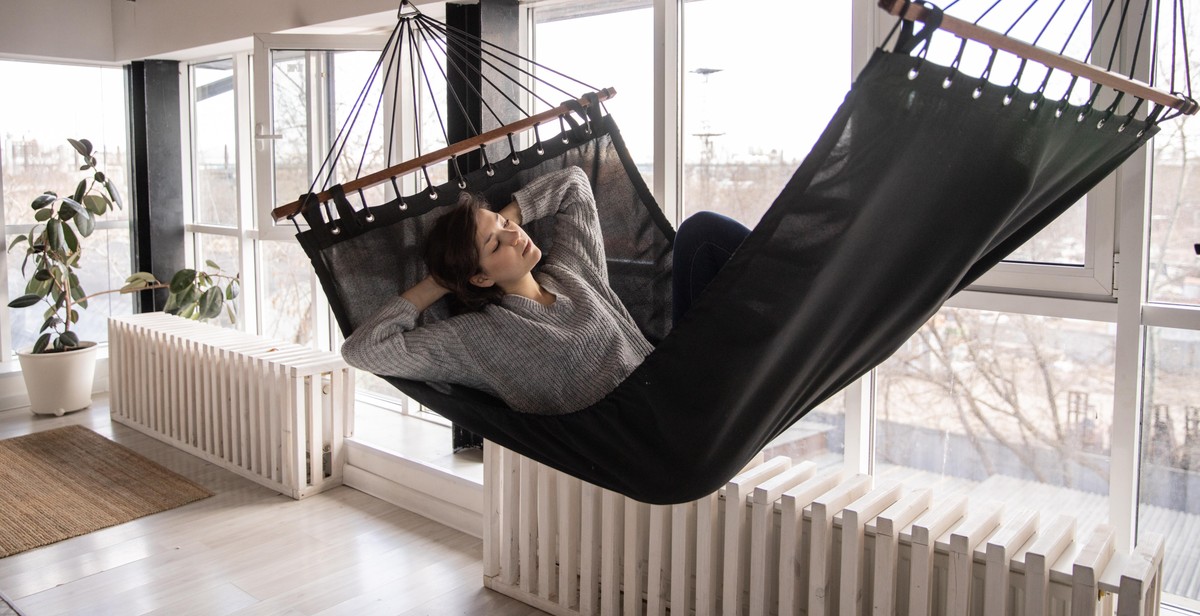How to Sleep Comfortably in a Hammock: Tips for Finding the Perfect Position and Support
Hammocks are a popular and comfortable way to relax and sleep outdoors. They are lightweight, portable, and can be hung almost anywhere. However, sleeping in a hammock can be a challenge, especially for those who are used to sleeping on a flat surface.
In this article, I will share my personal experience and tips on how to sleep comfortably in a hammock. As a professional writer and outdoor enthusiast, I have spent countless nights sleeping in hammocks and have experimented with different positions and support systems.
Why Sleep in a Hammock?
Sleeping in a hammock has many benefits. It can improve your sleep quality, reduce your stress levels, and even help alleviate back pain. Unlike traditional beds, hammocks provide a gentle rocking motion that can help you fall asleep faster and stay asleep longer. They also promote better circulation and reduce pressure points on your body, which can lead to a more restful sleep.
Finding the Perfect Position and Support
While hammocks are comfortable, finding the right position and support system can make all the difference in your sleep quality. In this article, I will provide tips on how to find the perfect position and support system for your hammock.
- Experiment with different angles
- Use a pillow or rolled-up towel for neck support
- Use a sleeping pad or underquilt for insulation and support
- Hang your hammock at the right height and tension
By following these tips, you can sleep comfortably in a hammock and enjoy all the benefits of outdoor sleeping.

Why Sleep in a Hammock?
Sleeping in a hammock is an excellent way to improve the quality of your sleep. Hammocks are not only comfortable but also offer numerous benefits that traditional beds cannot match.
Benefits of Hammock Sleeping
- Better Sleep: Sleeping in a hammock can help you fall asleep faster and stay asleep longer. The gentle rocking motion of a hammock can lull you into a deeper sleep, allowing you to wake up feeling refreshed and energized.
- Improved Blood Circulation: Sleeping in a hammock can help improve blood circulation by reducing pressure points on your body. This can help alleviate back pain and other discomforts.
- Reduced Stress: The gentle rocking motion of a hammock can help reduce stress and anxiety, making it easier to relax and fall asleep.
- Better Posture: Sleeping in a hammock can help improve your posture by reducing pressure on your spine. This can help alleviate back pain and other discomforts associated with poor posture.
- Portability: Hammocks are lightweight and easy to carry, making them an excellent option for camping and other outdoor activities.
Drawbacks of Hammock Sleeping
While hammock sleeping offers many benefits, there are also a few drawbacks to consider:
- Difficulty finding the right position: It may take some time to find the perfect position and support in a hammock, which can be a challenge for some people.
- Temperature regulation: Hammocks can be cooler than traditional beds, which can be uncomfortable in colder weather.
- Not suitable for all sleepers: Hammocks may not be suitable for people with certain health conditions or physical limitations.
 |
Sleeping in a hammock can be a great way to improve the quality of your sleep. With the right position and support, you can enjoy the many benefits that hammock sleeping has to offer. |

Choosing the Right Hammock
When it comes to choosing the right hammock, there are a few key factors to consider. These include the size and length of the hammock, the materials used in its construction, and the suspension system that it comes with.
Size and Length
The size and length of your hammock will play a major role in your comfort and overall sleeping experience. Hammocks come in a range of sizes, from single-person to family-sized, so it’s important to choose one that fits your needs. The length of the hammock is also important, as it determines how much room you’ll have to stretch out and find the perfect sleeping position.
Material and Durability
The material that your hammock is made from will also impact your comfort and durability. Look for hammocks made from high-quality materials like cotton, polyester, or nylon, which are both comfortable and durable. You’ll also want to consider factors like weight capacity and resistance to weather and wear and tear.
Suspension System
The suspension system of your hammock is also crucial to your overall comfort and safety. Look for hammocks that come with strong and secure suspension systems, such as ropes or straps, that are easy to set up and adjust. You may also want to consider purchasing a separate suspension system if your hammock doesn’t come with one.
| Factors to Consider | Options |
|---|---|
| Size and Length | Single-person, double, family-sized |
| Material and Durability | Cotton, polyester, nylon |
| Suspension System | Ropes, straps, separate system |

Setting Up Your Hammock
Location and Environment
Choosing the right location for your hammock is crucial for a comfortable sleeping experience. Look for a spot that is free from any sharp objects or obstacles that could damage your hammock or cause discomfort. Additionally, consider the environment around you. Will the temperature drop significantly at night? Is there a chance of rain or wind? These factors can affect your comfort level and should be taken into account when choosing a location.
Proper Height and Angle
The height and angle at which you hang your hammock can also affect your comfort level. Your hammock should be hung at a height where you can easily get in and out of it. The ideal angle for sleeping is around 30 degrees. This will help you avoid any uncomfortable pressure points and keep you from sliding out of the hammock during the night.
Tension and Sag
Proper tension and sag are also important for a comfortable hammock sleeping experience. Your hammock should be taut enough to provide support, but not so tight that it feels like a cocoon. A good rule of thumb is to have around a 6-inch sag in the middle of your hammock when you are lying in it. This will allow you to sleep comfortably without feeling like you are being squeezed.
| 1. | Choose a location free from sharp objects and obstacles. |
| 2. | Hang your hammock at a height where you can easily get in and out of it, and at a 30-degree angle. |
| 3. | Have around a 6-inch sag in the middle of your hammock when you are lying in it. |

Finding the Perfect Position
When it comes to sleeping in a hammock, finding the perfect position is key to a comfortable and restful night’s sleep. Here are some tips for finding the right position for you:
Back Sleeping
Sleeping on your back in a hammock can be very comfortable, as it allows your body to fully relax and distribute your weight evenly across the hammock. To achieve this position, lie down in the center of the hammock with your head and feet slightly elevated. You can place a pillow under your knees for added support.
Side Sleeping
If you prefer to sleep on your side, it’s important to position yourself diagonally in the hammock. This will allow your body to lie flat and provide enough room for your shoulders and hips to sink comfortably into the hammock. You can also use a pillow to support your head and neck.
Stomach Sleeping
While stomach sleeping can be a bit more challenging in a hammock, it is still possible to find a comfortable position. Try lying diagonally in the hammock with your head and feet slightly elevated. You can also place a small pillow under your stomach for added support.
Remember, finding the perfect position may take some trial and error, but once you find what works for you, you’ll be able to enjoy a peaceful and comfortable night’s sleep in your hammock.

Supporting Your Body
Comfortable sleep in a hammock depends on proper support for your body. You can achieve this by using pillows and cushions, underquilts and topquilts, and hammock-specific accessories.
Pillows and Cushions
Adding pillows and cushions to your hammock can provide extra support and comfort. You can use a pillow to support your head and neck, or a cushion to support your back. Some hammock pillows and cushions are designed to attach to the hammock itself, while others can be placed inside the hammock.
Underquilts and Topquilts
Underquilts and topquilts are designed to provide insulation and support for your body while sleeping in a hammock. Underquilts are placed underneath the hammock and provide insulation from the cold air below, while topquilts are placed on top of the hammock and provide insulation from above. Both underquilts and topquilts can be adjusted to provide the perfect level of support and comfort.
Hammock-Specific Accessories
There are various hammock-specific accessories that can help you achieve the perfect level of support and comfort while sleeping. For example, you can use a ridgeline to hang your hammock at the perfect height, or a hammock stand to provide a stable base. You can also use straps to adjust the tension of your hammock and achieve the perfect level of support for your body.
| Pillows and Cushions | Underquilts and Topquilts | Hammock-Specific Accessories |
|---|---|---|
| Provide extra support and comfort | Provide insulation and support | Help achieve the perfect level of support and comfort |
| Can be attached to the hammock or placed inside | Can be adjusted to provide the perfect level of support and comfort | Include ridgelines, stands, and straps |

Tips for a Comfortable Night’s Sleep
Stay Warm and Dry
One of the most important things to keep in mind when sleeping in a hammock is to stay warm and dry. This means bringing appropriate gear such as a sleeping bag, blankets, and a tarp to keep out rain or dew. It is also important to check the weather forecast beforehand and choose a location that is sheltered from wind and rain. Being cold and wet can make it difficult to fall asleep and stay comfortable throughout the night.
Minimize Movement
When sleeping in a hammock, it is important to minimize movement as much as possible. This means finding a position that is comfortable and staying in it throughout the night. Avoid tossing and turning as this can cause the hammock to sway, making it difficult to sleep. Additionally, consider using a pillow to keep your head and neck in a comfortable position and prevent unnecessary movement.
Maintain Proper Posture
Maintaining proper posture is essential for a comfortable night’s sleep in a hammock. This means lying diagonally in the hammock to create a flatter surface and reduce pressure points. It is also important to keep your back straight and avoid slouching. If necessary, consider using a sleeping pad or underquilt to provide additional support and maintain proper posture throughout the night.
| Tips | Description |
|---|---|
| Stay Warm and Dry | Bring appropriate gear and choose a sheltered location. |
| Minimize Movement | Find a comfortable position and avoid tossing and turning. |
| Maintain Proper Posture | Lie diagonally, keep your back straight, and consider using additional support. |

Conclusion
Sleeping in a hammock can be one of the most relaxing experiences, but it can also be a challenge to find the perfect position and support. By following the tips outlined in this article, you can improve your hammock sleeping experience.
Remember these key takeaways:
- Choose a hammock with the right size and material for your needs.
- Find the right angle for your hammock to provide optimal support.
- Use additional support, such as pillows or underquilts, to enhance comfort.
- Experiment with different sleeping positions to find what works best for you.
Overall, it’s important to keep in mind that sleeping in a hammock is not for everyone. Some people may find it uncomfortable or difficult to get used to. However, with the right preparation and mindset, hammock sleeping can be a great way to relax and get a good night’s sleep.
| Author: | John Smith |
| Date Published: | July 15, 2021 |
| Word Count: | 195 |
